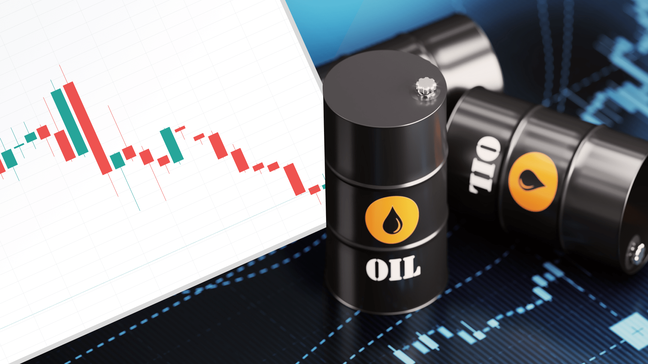Cautious mood prevails…
Market sentiment remains fragile as concerns intensify around the U.S.-China trade deal. Tensions escalated after U.S. President Donald Trump imposed 100% tariffs on Chinese goods. In response, China introduced a $1.7 million “special port fee” on a U.S.-linked ship and reportedly tightened restrictions on rare earth metal exports. Trump further criticized China’s halt on U.S. soybean purchases, calling it an “economically hostile act.” He suggested terminating business with China over cooking oil and other products, stating that the U.S. can handle production domestically. Though Trump softened his stance over the weekend, fears of a prolonged trade conflict linger. The Wall Street Journal reported that China sees Trump’s focus on stock market performance as strategic leverage.
Alongside trade tensions, geopolitical risks also weigh on markets. In Gaza, five Palestinians were reportedly killed by Israeli forces despite a ceasefire, raising fears of renewed conflict with Hamas. The U.S.-brokered peace agreement is under pressure, particularly as Israeli officials express frustration over delays in hostage transfers. Meanwhile, the U.S. Ambassador to the North Atlantic Treaty Organization (NATO) indicated that a major weapons package for Ukraine is expected soon, further contributing to global instability.
A rare joint appearance by Federal Reserve (Fed) Chair Jerome Powell, European Central Bank (ECB) President Christine Lagarde, and Bank of England (BoE) Governor Andrew Bailey offered limited clarity.
Fed’s Powell emphasized that future U.S. monetary policy will be guided by economic data and risk conditions. He acknowledged that incoming data, prior to the government shutdown, indicated stronger-than-expected growth. However, he warned that a prolonged shutdown could delay data, complicating policy decisions. Powell noted cooling labor market conditions and signaled patience and flexibility, suggesting the Federal Reserve may soon end balance sheet contraction, a move considered stimulative.
Markets are still pricing in rate cuts for both October and December. Federal Reserve Governor Michelle W. Bowman said she expects two cuts before year-end, while Boston Federal Reserve President Susan Collins said further rate reductions seem “prudent.”
ECB’s Lagarde noted the resilience reflected in the latest International Monetary Fund (IMF) forecasts, particularly for Japan. However, she stated it is too early to determine the bar for future European Central Bank rate cuts.
The IMF upgraded its 2025 global Gross Domestic Product (GDP) forecast to 3.2% from 3.0%, with stronger projections for Japan, Europe, and the U.S. IMF Chief Economist Pierre-Olivier Gourinchas cautioned that while U.S.-China trade tensions currently pose only a downside risk, a serious escalation could severely affect global growth.
BoE’s Bailey pointed to U.K. labor data supporting his view of a softening economy. He highlighted concerns about stretched equity valuations due to artificial intelligence, noted minimal price impact from tariffs so far, and said many U.K. businesses are postponing investments amid high uncertainty.
In Australia, the Westpac-Melbourne Institute Leading Index rose slightly in September, with the six-month annualised growth rate improving to +0.04% from -0.16% in August. Reserve Bank of Australia (RBA) Assistant Governor (Economic) Sarah Hunter said policy decisions are forward-looking, based on a one- to two-year horizon. She flagged that third-quarter inflation is likely to exceed forecasts, despite some softening in job growth. Hunter highlighted weak productivity as a long-term constraint on wage growth and overall economic performance. Her comments reduced expectations for near-term rate cuts, reinforcing the RBA’s cautious tone and fueling the AUDUSD.
New Zealand's economy contracted 1.1% year-over-year as of June 2025, marking its third decline in the past five quarters. Despite this, S&P Global Ratings affirmed the country’s foreign currency rating at ‘AA+/A-1+’ and local currency rating at ‘AAA/A-1+’. Reserve Bank of New Zealand (RBNZ) Chief Economist Paul Conway told Bloomberg TV that the recent 50 basis point rate cut was a difficult but necessary decision. He confirmed the Official Cash Rate remains the main policy tool, and that no new monetary instruments are currently planned. He added that the central bank is open to further cuts if required and will close the gap between its December and February meetings to ensure timely action. Conway also noted that the 2.5% rate sits at the lower end of the neutral range, but the bank continues to monitor conditions closely.
In Japan, both Industrial Production and Capacity Utilization declined in August. Political uncertainty added to volatility as the possibility of Sanae Takaichi leading the next Liberal Democratic Party (LDP) government diminished following the Komeito party’s withdrawal from the ruling coalition. This shift raised the prospect of a parliamentary deadlock ahead of the October 21 vote and opened the door for a potential opposition-led government. The market's previous expectation of continued Abenomics under Takaichi collapsed, leading investors to unwind weak-yen and long-equity positions, thereby strengthening the Japanese yen.
Canada’s outlook weakened after the IMF downgraded its GDP forecasts for both 2025 and 2026 by 0.4 percentage points. A disappointing building permits report for August, showing a 1.2% decline versus an expected 0.2% rise, added to economic concerns. However, the Canadian dollar remained strong, supported by optimism over potential trade deals with the U.S. covering aluminum, steel, and energy.
In currency markets, the U.S. Dollar Index (DXY) remained under pressure for a second straight day, giving space for gains in major currencies. USDJPY posted the steepest drop, reflecting safe-haven demand for the yen. AUDUSD climbed on hawkish Reserve Bank of Australia commentary, while EURUSD rose for a second session, encouraged by Lagarde’s optimism. GBPUSD recovered from a 10-week low, recording its first daily gain in three sessions.
Crude oil prices fell to their lowest since early May, pressured by concerns over weak Chinese demand and ongoing tensions in the Middle East. Gold continued to rise, nearing record highs around $4,190, as investors sought safe-haven assets amid rising uncertainty. Meanwhile, Bitcoin (BTC) and Ethereum (ETH) both declined for a second consecutive day.
Asia-Pacific equities edged higher, tracking a late rebound on Wall Street that helped offset earlier losses. U.S. stock futures had fallen sharply but reversed direction after U.S. Trade Representative Greer signaled a more conciliatory approach toward China during a CNBC appearance. His comments, which included an acknowledgement that China had overstepped, helped lift investor sentiment. The Russell 2000 rose over 2%, aided by strong earnings from Wells Fargo, and contributed to a broader market rally. Despite this, major U.S. indices closed the session mixed.
EURUSD, GBPUSD rebound, USDJPY slumps
EURUSD rises for the second consecutive day as upbeat statements from ECB’s Lagarde join softer USD, ignoring unimpressive German inflation and downbeat ZEW sentiment data from the Eurozone and Germany.
Elsewhere, GBPUSD posts the first daily gain in three, bouncing off a 10-week low amid softer USD. The Cable slumped to a multi-day low the previous day despite softer USD as BoE’s Bailey sounded worried and dovish while the UK employment data came in negative.
Meanwhile, USDJPY drops to a week’s low while extending the previous day’s pullback, amid softer USD, easing concerns about the BoJ’s rate hikes and the market’s rush towards the JPY due to its traditional haven status.
Antipodeans recover
AUDUSD led the G10 currency gainers as it rebounded from a seven-week low, supported by hawkish commentary from the Reserve Bank of Australia. The Australian Dollar rose despite weak sentiment data both domestically and from China, as traders instead focused on hopes for additional stimulus from Chinese authorities and a broadly softer U.S. Dollar.
Similarly, NZDUSD recovered from a six-month low, even as dovish signals from the Reserve Bank of New Zealand and concerns about New Zealand’s economic growth lingered. The New Zealand Dollar's strength appeared to reflect optimism over potential Chinese stimulus measures and continued U.S. Dollar weakness.
Meanwhile, USDCAD pulled back from its highest level since early April, breaking a two-day winning streak. The Canadian Dollar strengthened on hopes of progress in U.S.-Canada trade negotiations, despite the impact of weaker Canadian building permits data and falling crude oil prices, which remain Canada’s largest export. The softer U.S. Dollar also contributed to the pair’s decline.
Crude Oil bears keep the reins
Crude Oil dropped to the lowest level since early May the previous day as the U.S.-China trade war fears flagged demand concerns from the biggest oil customer, China. Also challenging the black gold were increasing U.S. stockpiles last week and anxiety ahead of today’s U.S. API weekly inventory details, not to forget the Israel-Hamas ceasefire. Further, Trump’s readiness to lift Iran sanctions, if it agrees to his terms, also weighed on the oil prices. However, fears that the peace in the Middle East is elusive and China stimulus hopes seemed to have put a floor under the energy benchmark, even as the recovery momentum remains mostly absent.
Gold rises further, cryptocurrencies drop
Gold extended its winning streak to four consecutive sessions, marking a fresh all-time high for the third straight day, recently trading around $4,190. The continued rally in the precious metal is supported by heightened market uncertainty, a weaker U.S. Dollar, and expectations of more accommodative monetary policy from major central banks. Additional support comes from rising institutional demand and ongoing gold stockpiling by China.
In contrast, Bitcoin (BTC) and Ethereum (ETH) remain under pressure, posting their second consecutive daily decline. The lack of buying interest is attributed to escalating geopolitical tensions and broader market consolidation amid the ongoing U.S. government shutdown.
Latest moves of key assets
- WTI crude oil remains pressured around $58.50, after hitting a five-month low the previous day.
- Gold remains strong, refreshing its ATH near $4,195 before easing to $4,189 by press time.
- The US Dollar Index (DXY) drops for the second consecutive day, down 0.20% intraday to 98.85 as we write.
- Wall Street closed mixed, following a downbeat start. That said, the Asia-Pacific stocks edge higher, whereas equities in Europe and Britain trade mixed during the initial trading hours.
- Bitcoin and Ethereum both drop around 0.5% intraday, down for the second straight day, to $112,400 and $4,100 at the latest.
A risk-filled day ahead…
Looking ahead, while the economic calendar remains light, second-tier U.S. activity data and developments related to the Gaza conflict, the U.S. government shutdown, and U.S.-China trade tensions are likely to drive market sentiment.
The U.S. Dollar may recover some recent losses, potentially pressuring equities and cryptocurrencies. Gold could remain supported amid uncertainty, though the $4,200 level may trigger profit-taking.
Crude Oil remains vulnerable to further downside if the American Petroleum Institute (API) inventory data continues to reflect rising stockpiles.
Overall, the lack of high-impact data, coupled with persistent geopolitical and trade-related risks, may dampen risk appetite and challenge momentum-based trading strategies.
Predictions for top-tier assets
- Bullish Move Expected: USDCAD, USDJPY
- Further Downside Likely: USDCHF, Gold
- Sideways Movement Anticipated: Nasdaq, DJI30, USDCNH, AUDUSD, NZDUSD, GBPUSD, US Dollar, BTCUSD, ETHUSD, Crude Oil
- Slow & Gradual Fall Eyed: DAX, FTSE 100, EURUSD




